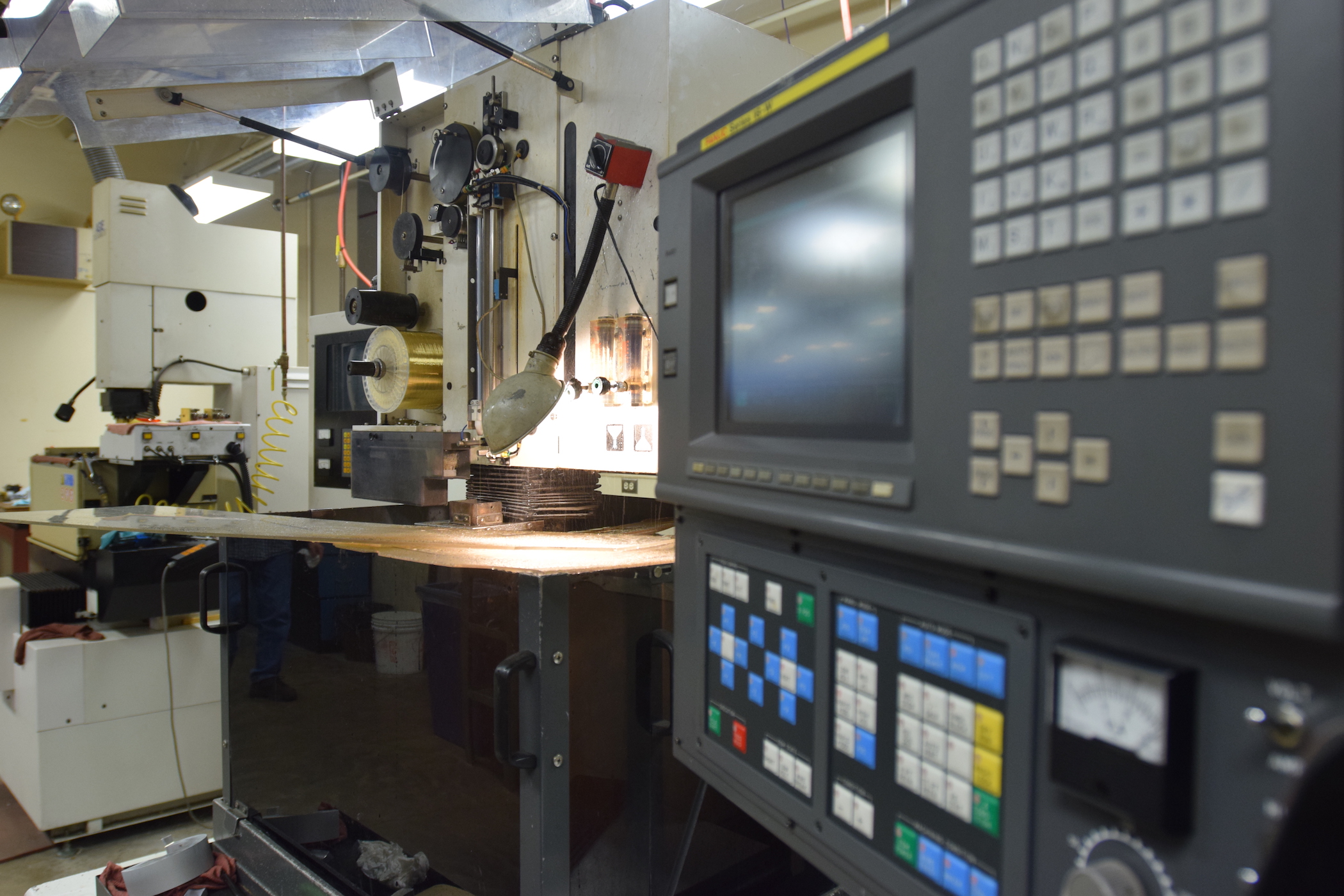Electrical Discharge Machining (EDM)¶
One of the most precise and expensive machining techniques available is the electrical discharge machining (EDM) technique. A conductive part is mounted to a computer controlled table and submerged in a dielectric fluid (commonly oil or de-ionized water). An electrode is then brought very close to the part and a pulsed electrical power applied. The voltage between the electrode and part reaches the breakdown point of the dielectric and a spark occurs. This spark removes material from the workpiece and the electrode. After the spark is complete, fluid rushes in to sweep away waste material and cool the part. The workpiece is slowly eroded away until it is the desired shape. Electrodes are a significant cost of operating the machine. Systems that use a wire electrode pass it through the cutting area only once, then it is discarded.
The “kerf” of this process is very consistent around 0.001 in (0.03 mm). Therefore, machining accuracy of about 0.001 in (0.03 mm) is common, with an order of magnitude improvement possible for very high tolerance parts. The EDM surface finish is also very good.
It is also possible to build a basic EDM machine for use in the home or lab shop.
Safety Precautions¶
The main safety hazards with EDM are shock and slip. Avoid contact with the dielectric fluid or part when the machine is in operation. If the dielectric is spilled or is on your hands, make sure it is promptly cleaned as it is a slip and dropping hazard. Talk to your machine shop supervisor to learn any safety precautions specific to your machine and shop.

